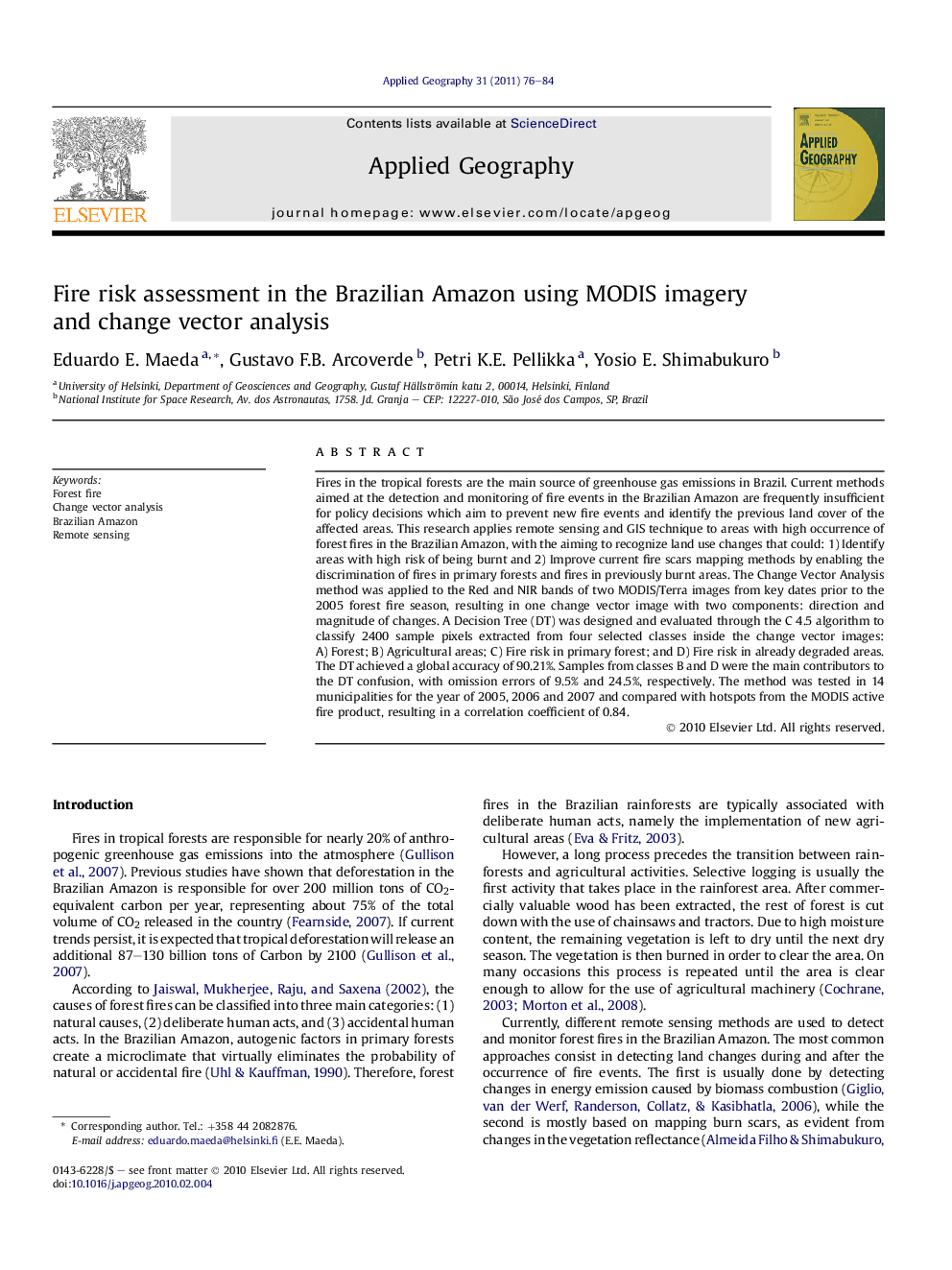| Article ID | Journal | Published Year | Pages | File Type |
|---|---|---|---|---|
| 83375 | Applied Geography | 2011 | 9 Pages |
Fires in the tropical forests are the main source of greenhouse gas emissions in Brazil. Current methods aimed at the detection and monitoring of fire events in the Brazilian Amazon are frequently insufficient for policy decisions which aim to prevent new fire events and identify the previous land cover of the affected areas. This research applies remote sensing and GIS technique to areas with high occurrence of forest fires in the Brazilian Amazon, with the aiming to recognize land use changes that could: 1) Identify areas with high risk of being burnt and 2) Improve current fire scars mapping methods by enabling the discrimination of fires in primary forests and fires in previously burnt areas. The Change Vector Analysis method was applied to the Red and NIR bands of two MODIS/Terra images from key dates prior to the 2005 forest fire season, resulting in one change vector image with two components: direction and magnitude of changes. A Decision Tree (DT) was designed and evaluated through the C 4.5 algorithm to classify 2400 sample pixels extracted from four selected classes inside the change vector images: A) Forest; B) Agricultural areas; C) Fire risk in primary forest; and D) Fire risk in already degraded areas. The DT achieved a global accuracy of 90.21%. Samples from classes B and D were the main contributors to the DT confusion, with omission errors of 9.5% and 24.5%, respectively. The method was tested in 14 municipalities for the year of 2005, 2006 and 2007 and compared with hotspots from the MODIS active fire product, resulting in a correlation coefficient of 0.84.
